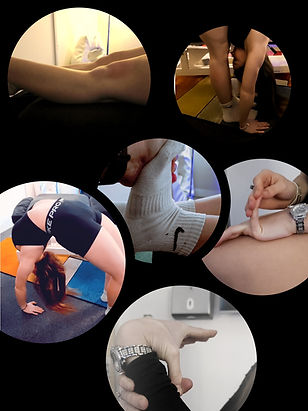Help for Hypermobility In Cardiff


What is hypermobility?
In short, it means that connective tissues in the body are more elastic and stretch more than the average person. You may have heard of the term “double jointed”, or bendy. People who are hypermobile tend to do well in sports like gymnastics, yoga, ballet and martial arts. They find it much easier to contort their bodies compared to someone who has “normal ranges of motion”. Hypermobility is a spectrum disorder that has many types and subtypes with varying symptoms. Some people can go through life with no problems, whereas others symptoms can range from mild to severe, to even disabling. This makes hypermobility a complex issue, that is often underdiagnosed with many sufferers, often leaving them with lifelong questions as to what is going on, due to lack of diagnosis in the medical profession. But it is getting better, more practitioners are spotting the signs and getting the people the care that they need. You cannot cure hypermobility but it can be managed. It is believed to be part genetic and part hereditary. Often hypermobility can run in the family.
What are the types of hypermobility?
Hypermobility is now classed as a spectrum disorder:
-
EDS: Ehler’s Danlos syndrome: A heritable disorder of connective tissue, a group of 13 types.
-
JHS (joint hypermobility syndrome: (A subtype of EDS type 3)
-
HSD (hypermobility spectrum disorder) confused yet? This is the latest terminology for JHS you can see more via the EDS 2017 international classification. The subtypes are generalised, peripheral, localised, and historical.
-
Some are symptomatic and non-symptomatic
What are the signs and symptoms of hypermobility?
As there are different types and subtypes the following list is just to show the extent of the signs and symptoms: The more severe are less common.
-
Fatigue/ chronic fatigue syndrome
-
Joint pain, the need to “click” joints to feel relief
-
Flat feet
-
Headaches
-
Clumsiness due to poor joint position sense
-
Joint dislocations/subluxations
-
Stretchy skin, velvet skin, skin that bruises/damages easily
-
Gastrointestinal disorders
-
Gynecological issues such as heavy menstrual periods
-
Scoliosis
-
Anxiety disorders
-
An issue with certain organs such as the heart valves
-
Overcrowding of teeth and dental issues
-
Dizziness/POTS Postural orthostatic tachycardia syndrome
-
Progressive disability
How is hypermobility diagnosed?
Most cases can be picked up through a medical history, or examination and we also use the Beighton scale. This score looks at the flexibility of certain joints. The scale is 0-9
We look at the flexibility of the finger/pinky, thumbs, elbows, knees, foot flexion, and how far you can touch your toes. We then tally up the results to see the level of flexibility. This is our limitation, if we find the hypermobility if affecting organ systems and is severe then a referral is needed to investigate further. Genetic testing would be the next step. There is a 50% chance it can be passed from a parent to a child and will have the same type of hypermobility as the parent.
How many people are affected by hypermobility?
It is believed that 20% of the population is affected in some way. However as the symptoms of severity increase then the percentage decreases. It is a condition that starts at birth and affects girls more than boys. JHS is five times more common than EDS.
How is hyper-mobility managed in a chiropractic setting here in Cardiff?
It depends of the type of hypermobility. Generally, the more severe the hypermobility, the gentler the treatments. Advise is given about the condition, tips on managing pain and mental health as well as hands-on treatments. We are selective in whom we perform joint manipulation on. It stands to reason of someone is very flexible then “cracking” their joints could increase their flexibility. Many patients have stretchy limbs but a stiff spin, in those cases, they can benefit from gentle joint manipulation. With hypermobility can come instability of the joints, so getting certain joints stronger and more aware is very important. Learning to exercise without pain is very beneficial.
Bookings for consultations can be made online via www.corbinchiropractic.co.uk
Or get in contact via health@corbinchiropractic.co.uk
.png)
